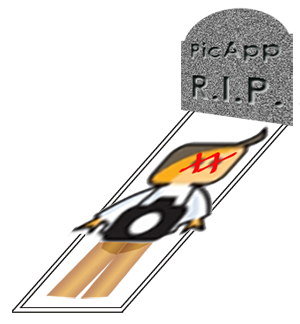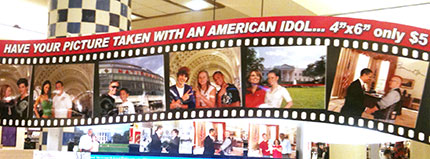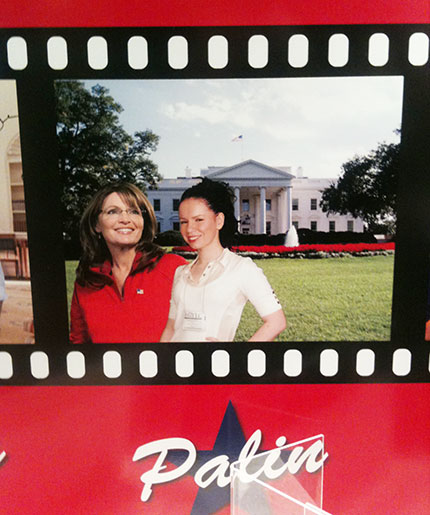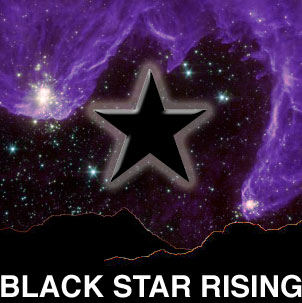It is with great pleasure that I announce the release of my latest book -
Photographs from the Edge of Reality
. The book tells the stories about a number of the assignments I have done over the past 20 years, and the challenges, logistics, and obstacles that were surmounted to bring images back.
Why the title? Well, as I traveled around the world as a photographer, it quickly became apparent that stories like, “
I was stuck on an overnight train, sleep deprived en-route Warsaw Poland as the border guards were demanding my travel documents at 4am in a language I didn’t understand…” or, “
I found myself celebrating the Fourth of July with the Mexican Ambassador being serenaded by Ben Vereen…” or, “
The President looked right at me as he was walking down Pennsylvania Avenue…” all seemed surreal to friends, family, and even colleagues. They seemed, in fact, made up, or impossible. Fortunately, my reason for being there was to document these circumstances–with a camera–seemingly from the edge of reality, hence the title.
Very early in my career, I began writing dispatches and sending them off to family, usually by email, well before the age of the commonly known Internet as it is today. It saved me time, as I didn’t have to recount the stories repeatedly and miss leaving something out. Over time, my life got a bit crowded, and I lost the time needed to do them as I previously had.
However, as most photographers will tell you, their photographs are not just images to them, but an instant reminder of what was seen through the viewfinder, as well as the environment outside of the frame, from weather to assignment challenges, to the shot that got away. This too, is the same for me. I also remember lighting setups, and even for film assignments, I can remember f-stops and shutter speeds, and usually focal lengths too. It’s a form of instant recollection that I am putting down on paper here not just to weave a tale from assignments past, but to bring these stories back to life, and share with you, dear reader, what went into the assignment. The challenges overcome, the missed shots, the lighting setups, and even, in some instances, the full take so you can see how a moment in time gets captured and selected.
As frequent readers of this blog Previously, I wrote the book Best Business Practices for Photographers, and you’ll find some of that information here in this book too. If, however, you want to read about the assignments and see the resulting photographs, and how they were achieved–from photographing presidents to Eastern Europe, to the biggest names in Rock and Roll and Hollywood–often making something out of nothing–then this is the book for you.
In over 20 years spent as a photographer, I have had the good fortune of traveling the world on someone else’s dime to make great images. This is the book of the stories behind some of them.
Here are what a few friends and colleagues have said about the book:
"John Harrington's, "Photographs From the Edge," is a real "how to" book that gives aspiring shooters insight into the real world of assignment photography. Harrington has done it again when it comes to describing his innovative approach to his profession, and his ability to share it with the world." David Hume Kennerly, Pulitzer Prize Winner
"John shows you the world of Washington DC photography behind the pomp and power posturing. If you want to learn how to do it right, then this is the book for you."Cameron Davidson, award-winning photographer
When John Harrington goes on assignment, you go with him. It's more than just loading your memory cards and batteries. It's figuring out where you need to be and how to get there. John is a Pro at business, and now with his new book, shares some of his hard won secrets of how to make your clients as happy with your pictures are you are.David Burnett, award-winning photojournalist and co-founder, Contact Press Images
"With this book, John does not attempt to glorify or sugar coat what it is REALLY like to be a news photographer. This leads to a much more introspective and interesting look into the behind the scenes world that most will never get to experience. I can see this book appealing to both photographers as well as every day people who are interested in the details of what happens BEHIND the camera - not just in front of it."Vincent Laforet, Pulitzer Prize Winner & frmr New York Times Staff Photographer.
Great stories from a great guy. Read this book.Bill Frakes, award winning photographer
Let me here express my thanks to them for their kind words.
If you're travelling to New York City this week for the PhotoPlus Expo, I'll be at the Cengage Learning booth all three days (check the booth for times) signing copies, if you'd like one, and they will also have my previous book - Best Business Practices for Photographers, if you'd like a signed copy of that one, and presenting the seminar below, Thursday morning:
Here are the details:
COMMERCIAL/ EDITORIAL
Thursday, 8:45 AM – 11:45 AM
NEW! Delivering What You Promise on Global Assignments [TA3]
John Harrington
Sponsored by CengageOnce the assignment has been booked and contracts signed, delivering on your promise is often one of the most challenging parts of the job. The key to longevity in the business is making sure the client gets what you said they would, despite the logistics of getting there, the challenges of pre-visualizing the final image and the demands of working with high-profile subjects. Through a series of his own assignments—covering subjects that range from Presidents to rock stars to your everyday Joe—Harrington will talk you through what it took to get the shot. Whether climbing to the crows’ nest of the Golden Gate Bridge or hanging out of a helicopter for air-to-air photography, the core of this presentation will be about learning from experience and knowing what it takes to get the shot. All levels.
So, go, sign up (
here). While the book, Best Business Practices for Photographers has all manner of detail on the business of photography, there are not photos. This presentation will show you the photos, the behind-the-scenes images, and other details about how the assignment ended up!
Buy the book (on Amazon): -
Photographs from the Edge of Reality
.
(Comments, if any, after the Jump)
Please post your comments by clicking the link below. If you've got questions, please pose them in our Photo Business Forum Flickr Group Discussion Threads.
[More: Full Post and Comments]
, but you can see the image of a suited man (obvious to all as Aldrin) on the moon.











